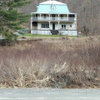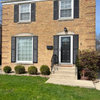backyard patio design help?!! with pics
diybmore
11 years ago
Related Stories

STANDARD MEASUREMENTSThe Right Dimensions for Your Porch
Depth, width, proportion and detailing all contribute to the comfort and functionality of this transitional space
Full Story
UNIVERSAL DESIGNMy Houzz: Universal Design Helps an 8-Year-Old Feel at Home
An innovative sensory room, wide doors and hallways, and other thoughtful design moves make this Canadian home work for the whole family
Full Story
BATHROOM WORKBOOKStandard Fixture Dimensions and Measurements for a Primary Bath
Create a luxe bathroom that functions well with these key measurements and layout tips
Full Story
8 Ways Dogs Help You Design
Need to shake up a room, find a couch or go paperless? Here are some ideas to chew on
Full Story
SELLING YOUR HOUSE5 Savvy Fixes to Help Your Home Sell
Get the maximum return on your spruce-up dollars by putting your money in the areas buyers care most about
Full Story
ORGANIZINGHelp for Whittling Down the Photo Pile
Consider these 6 points your personal pare-down assistant, making organizing your photo collection easier
Full Story
SELLING YOUR HOUSEHelp for Selling Your Home Faster — and Maybe for More
Prep your home properly before you put it on the market. Learn what tasks are worth the money and the best pros for the jobs
Full Story
DECLUTTERINGDownsizing Help: Choosing What Furniture to Leave Behind
What to take, what to buy, how to make your favorite furniture fit ... get some answers from a homeowner who scaled way down
Full Story
PETS6 Ways to Help Your Dog and Landscape Play Nicely Together
Keep your prized plantings intact and your dog happy too, with this wisdom from an expert gardener and dog guardian
Full StoryMore Discussions







designoline6
diybmoreOriginal Author
Related Professionals
Harrison Landscape Architects & Landscape Designers · Desert Hot Springs Landscape Contractors · Gainesville Landscape Contractors · Hayward Landscape Contractors · Parker Landscape Contractors · Ponte Vedra Beach Landscape Contractors · Seven Hills Landscape Contractors · Spring Landscape Contractors · Carmel Decks, Patios & Outdoor Enclosures · Harrisburg Decks, Patios & Outdoor Enclosures · Mebane Decks, Patios & Outdoor Enclosures · Vandalia Decks, Patios & Outdoor Enclosures · West Chester Decks, Patios & Outdoor Enclosures · Burleson Swimming Pool Builders · Redlands Swimming Pool Builderskarinl
Yardvaark
diybmoreOriginal Author
diybmoreOriginal Author
karinl
diybmoreOriginal Author
Brad Edwards
karinl
diybmoreOriginal Author